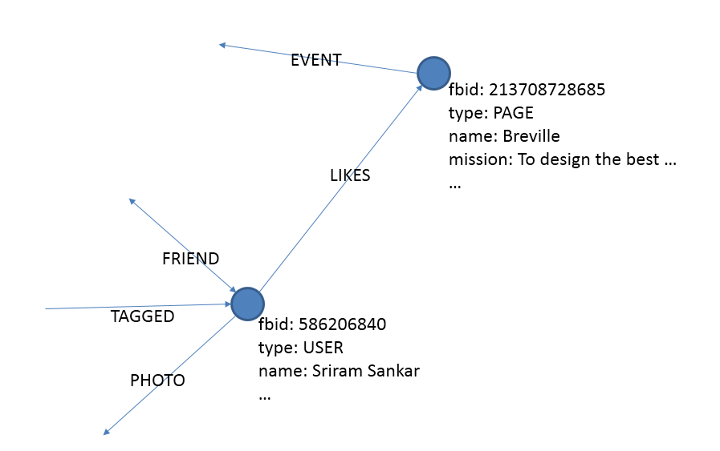Graph Traversal
The 'Graph' in 'GraphQL' comes from, originally, Facebook thinking of their data in terms of a graph:

© Meta Platforms Inc; from the article
Under the Hood: Building out the infrastructure for Graph Search,
retrieved 2024-01-06T10:27:00Z.
Used under the "Fair Use" doctrine
(Copyright Act, Section 107).
Graph overview
In a mathematical graph, there are "nodes" and "edges". The nodes are generally the entities (users, pages, posts, photos, etc), and the edges are the relationships between those entities (likes, tagged, photo, friend, etc). Both nodes and edges may contain data, for example, an edge might show that Bob is a friend of Alice, and it can contain additional information such as the duration of that friendship.
When traversing a mathematical graph, you can start at a node (or set of nodes) and then follow the edges to discover new nodes. Let's imagine your name is 'Current Viewer' and this is a portion of your social graph:
To get to Lil' Bobby you could traverse friend directly (blue), or you could traverse friend>friend to
go via Aveline Gearhart (red). Note
that independent of which path you take to get to Lil' Bobby, their likes are
always the same: SQL Injection and Conferences.
This property turns out to be really important if you want to ensure the web page is always rendered consistently even when only doing small data fetches by using a storage technique we call normalized stores.